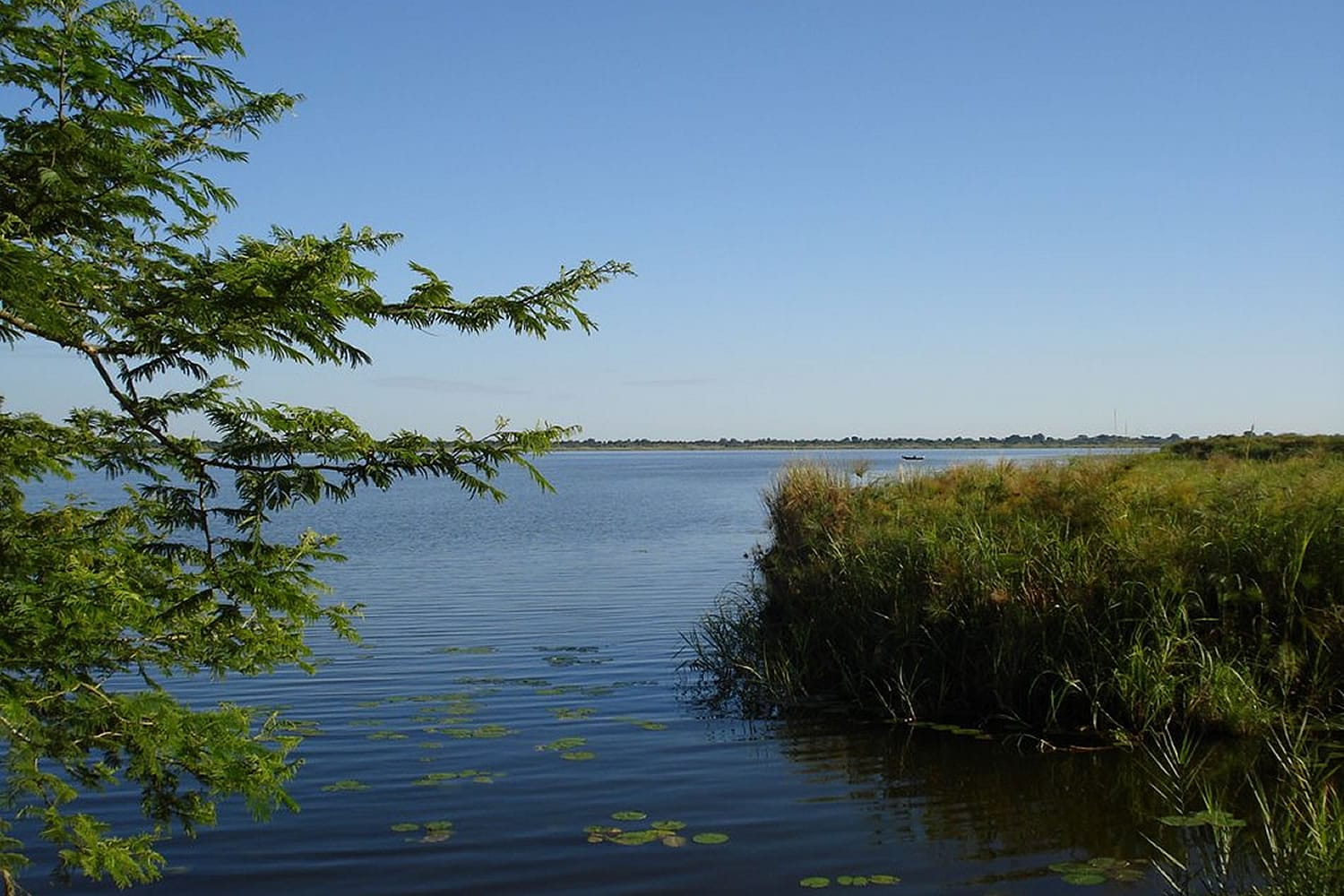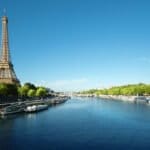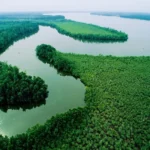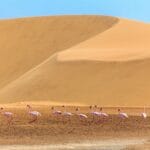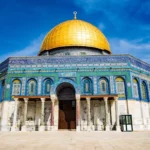Lake Victoria, known as Lake Nalubaale in Uganda, is more than just a geographical wonder; it’s a lifeline for millions and a source of captivating history and cultural significance. Beneath the surface of Lake Nalubaale lies a complex ecosystem facing challenges from pollution, overfishing, and climate change, impacting its delicate balance.
A Lake of Two Names: Victoria and Nalubaale
We’ve already talked about how Lake Victoria is the largest lake in Africa, but did you know it has another name? The people who live around the lake call it Nalubaale. This name wasn’t just picked randomly – it has a deep connection to their history, culture, and beliefs.
The name Nalubaale comes from the Luganda language, spoken by the Baganda people of Uganda. For them, the lake is more than just a body of water – it’s the “Lake of the Spirits.” They believe that spirits reside within the lake, making it a place deserving of respect and reverence.
So how did the lake end up with the name “Victoria”? In 1858, a British explorer named John Hanning Speke was on an expedition to find the source of the Nile River. Upon encountering this impressive lake, he chose to name it after Queen Victoria, the then-reigning monarch of England.
Even though “Victoria” became the official name, the local people never stopped calling it Nalubaale. For them, it’s more than just a name on a map – it’s a reminder of their heritage and the spiritual connection they have to the lake.
The use of both names has sparked debate. Some believe the lake should officially be called Nalubaale as a way to honor local culture and challenge the legacy of colonialism. Others feel that “Lake Victoria” is more appropriate due to its global recognition and use in scientific research.
This debate transcends a simple name change; it delves into issues of cultural identity and respecting the historical narrative of a place. It encourages us to reflect on how we name places and the impact those names have.
A Legacy of Life: Exploring the Lake’s Significance
Lake Victoria, called “Nalubaale” (“Lake of the Spirits”) by locals, isn’t just big – it’s the largest lake in Africa and the second-largest freshwater lake on Earth! This makes it incredibly important for both the environment and the people who depend on it.
Imagine a lake so vast that it has inspired its own myths and legends. For centuries, the people around Lake Victoria have considered it sacred. Ancient rituals and ceremonies were performed on its shores, all connected to its spiritual importance. It’s a living, breathing testament to their history and beliefs.
The biodiversity of Lake Victoria is astounding! It’s home to over 500 types of fish, including the renowned Nile perch. Picture flocks of fish eagles soaring overhead, pelicans gliding across the surface, and even the unusual shoebill storks. Sadly, though, pollution, overfishing, and the introduction of invasive species threaten this delicate ecological balance.
Stepping back in time, we discover that Lake Victoria was once a thriving trade center. Then, in the 19th century, European explorers like John Hanning Speke arrived. They renamed it “Victoria” after their Queen, marking a significant shift in the lake’s story. Today, it remains a vital resource for Uganda, Tanzania, and Kenya.
Think about it: fishing provides sustenance and income for families, and the lake supports agriculture, tourism, and even acts as a transportation route. But overfishing and pollution pose significant threats to the lake’s future. It’s a delicate balancing act between utilizing its resources and ensuring their sustainability for generations to come.
The good news? People are actively working to protect Lake Victoria. Efforts are underway to regulate fishing practices, reduce pollution, and restore damaged habitats. It’s a collaborative effort, with everyone from local communities to international organizations joining forces to preserve this natural wonder. Lake Victoria isn’t just a lake; it’s a lifeline.
A Delicate Balance: Life In and Around the Lake
Lake Nalubaale is more than just a pretty sight; it’s the heart of a vibrant ecosystem. Beneath its surface, over 500 species of fish, some unique to this lake, navigate its depths. The iconic Nile perch, a giant among fish, also calls this lake home.
Above the water’s surface, the air is alive with the calls of fish eagles, their cries echoing across the vast expanse. Majestic shoebill storks, with their prehistoric appearance, stalk the shallows, their unusual forms mirrored in the rippling water.
Whispers of the Past: Legends and Lore Along the Shores
Nalubaale’s shores tell stories of ancient kingdoms, colonial encounters, and the enduring connection between the lake and the people who depend on it. Dotted along the shoreline are echoes of the past – ancient kingdoms that rose and fell, colonial outposts marking a period of significant change, and villages where life unfolds to the rhythm of the lake’s beating heart. Each stone, each ancient tree, whispers tales of bygone eras.
The name “Nalubaale” itself hints at the lake’s profound cultural meaning. It speaks of a mythical serpent god, a powerful spirit revered by the people who have lived by its shores for generations. Their lives, their beliefs, their very identities are woven into the fabric of the lake’s being.
Challenges on the Horizon: Protecting a Precious Resource
But even a giant like Lake Nalubaale faces threats. Pollution from agricultural runoff, waste seeping into the water – all take their toll. Overfishing, where more fish are taken than the lake can replenish, threatens the delicate balance of life within. And then there’s climate change, a global challenge with local consequences, altering weather patterns and affecting everything from water levels to fish populations.
Invasive species, such as the deceptively beautiful water hyacinth, spread across the surface, choking out native plants and disrupting the ecosystem. It’s a stark reminder that even in its grandeur, Lake Nalubaale is vulnerable.
A Shared Responsibility: Securing Nalubaale’s Future
There’s hope, though. Efforts are underway to protect and preserve this natural treasure. Local communities are coming together, their voices uniting to promote sustainable fishing practices. Scientists and researchers are working diligently, seeking solutions to pollution and ways to mitigate the effects of climate change.
Every step towards conservation, every act of awareness, is a drop in the bucket, but together, we can refill Lake Nalubaale with hope.
More Than Just a View: Experiencing Nalubaale’s Magic
Imagine gliding across the lake’s surface in a traditional wooden boat, the gentle rocking lulling you into a state of tranquility. The sun dips below the horizon, painting the sky in a riot of colors, and you’re enveloped by an overwhelming sense of peace.
Perhaps you’re an angler, lured by the thrill of the catch, your line dancing in the water, hoping for a tug from a feisty Nile perch. Every cast is a chance to connect with the lake’s bounty.
Birdwatchers will find themselves in paradise, their binoculars trained on the skies, hoping to catch a glimpse of rare and exotic species. The air vibrates with the chorus of countless birds, a symphony of nature that soothes the soul.
And for those seeking a deeper understanding of the region’s rich tapestry, the historical and cultural sites around the lake beckon. Explore ancient ruins, run your hand along weathered stones, and feel a connection to the people who walked these lands centuries ago.
A Legacy for Generations to Come
Lake Nalubaale is more than just a lake; it’s a shared legacy, a responsibility entrusted to us by generations past. It’s up to us to protect and preserve it, to ensure its waters continue to reflect the beauty of the African sky for generations to come.
Every action we take, from supporting sustainable practices to spreading awareness, contributes to the lake’s well-being. Let’s work together to ensure that Lake Nalubaale remains a source of life, wonder, and inspiration for generations to come.
Can You Swim in Lake Victoria, Tanzania?
We’ve discussed the immense size and beauty of Lake Victoria, but what about taking a dip? Can you swim in its inviting waters? The short answer is: it’s best avoided. While it might look tempting, especially on a hot day, Lake Victoria comes with its own set of risks that make swimming a potentially dangerous activity.
One significant concern is the presence of parasites, particularly bilharzia, which can cause severe health problems if it enters your system. It’s not a souvenir you want to bring back from your trip!
Larger inhabitants of the lake also pose a threat. Crocodiles, hippos, and even giant catfish all call Lake Victoria home. Encounters with these wild and unpredictable creatures while swimming are best avoided.
Pollution adds another layer of risk. Industrial waste, agricultural runoff, and sewage can contaminate the lake, creating a mixture of pollutants you don’t want to be swimming in. This can result in skin infections, stomach problems, and even respiratory issues.
As if parasites, predators, and pollution weren’t enough, Lake Victoria is also known for its strong and unpredictable currents. These currents can challenge even experienced swimmers and can easily sweep someone away, especially if they’re unfamiliar with the lake.
Another factor to consider is that Lake Victoria lacks the safety measures you might find at a beach or pool. Lifeguard services are limited, and safety equipment is scarce.
You might see locals swimming in Lake Victoria and wonder why they do it. For many, it’s a necessity, not a choice. They might rely on the lake for fishing or transportation and have learned to navigate its dangers. They possess a deep understanding of the lake and know which areas are safer than others. However, as a visitor, you don’t share that same familiarity and are more susceptible to the lake’s risks.
So, if swimming is off the table, what can you do? Plenty! You can take a relaxing boat tour, try your hand at fishing, or simply soak in the stunning views from a lakeside resort. Many resorts have swimming pools where you can cool off and enjoy the water safely.
Lake Victoria is a magnificent and awe-inspiring place, but it’s important to respect its power and the potential hazards it holds. By opting for safer ways to experience the lake, you can appreciate its beauty without putting yourself at risk.
Lake Tear of the Clouds is a beautiful alpine lake located in the Adirondack Mountains of New York. Lake Wohlford California is a popular recreation spot for boating, fishing, and swimming.
- Unveiling Bernhard Caesar Einstein’s Scientific Achievements: A Legacy in Engineering - July 15, 2025
- Uncover who is Jerry McSorley: CEO, Family Man, Business Success Story - July 15, 2025
- Discover Bernhard Caesar Einstein’s Scientific Contributions: Unveiling a Legacy Beyond Einstein - July 15, 2025
